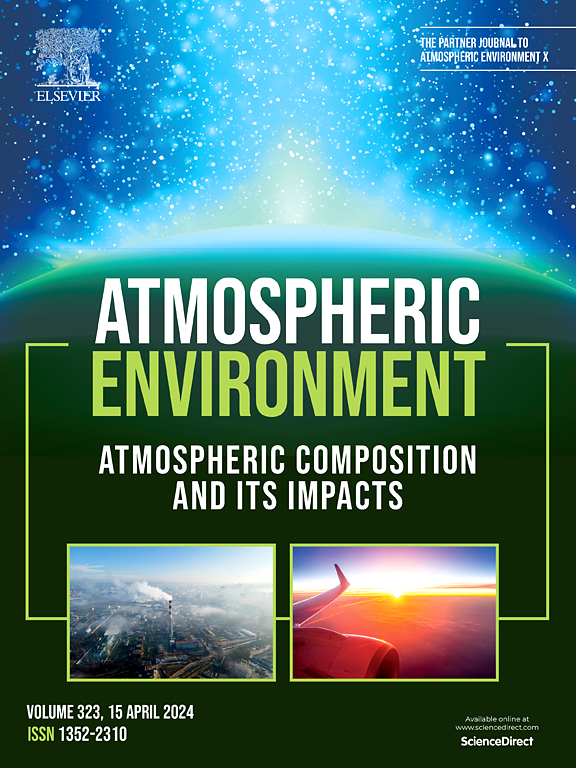Unexpected changes in occurrence and sources of chromophoric dissolved organic matter in PM2.5 driven by the clean air action over Xi'an, China
IF 4.2
2区 环境科学与生态学
Q2 ENVIRONMENTAL SCIENCES
引用次数: 0
Abstract
Chromophoric dissolved organic matter (CDOM) in atmospheric PM significantly impacts climate and health. However, China's air pollution control on CDOM is unclear. To evaluate the effect of the Blue Sky Defense Battle (BSDB) on the pollution characteristics and sources of CDOM, we comprehensively analyzed 1,428 PM2.5 samples in Xi'an (2016-2022). Compared with the pre-BSDB period, we found a 17% increase in the air quality index and a 42% reduction in CDOM pollution levels. Furthermore, in winter, carbonaceous aerosol concentrations notably declined, with OC decreased by 25% and EC by 74%. Additionally, CDOM in Xi'an was predominantly composed of humic chromophores (80%), and the highly oxygenated humic-like substances (HO-HULIS) declined by 34%, effectively reducing the potential oxidative toxicity risks. Source apportionment results from the excitation-emission matrix fluorescence fingerprinting technique with the non-negative matrix factorization (NMF) model demonstrated that the effective control of combustion sources was the main driver of changes in atmospheric concentrations, chemical composition, and optical properties. Based on the NMF model analysis of carbonaceous aerosol, the source contributions of atmospheric oxidation and photochemical reactions increased after the BSDB indicating the limited control of the secondary sources. Additionally, the ineffective control of dust sources and the increasing contribution of external transport to CDOM after the BSDB highlighted the importance of effective dust management and regional collaborative control. Despite the decline in PM2.5 levels, the rise in toxic components (HO-HULIS) indicated ongoing challenges for health-focused pollution control.

求助全文
约1分钟内获得全文
求助全文
来源期刊

Atmospheric Environment
环境科学-环境科学
CiteScore
9.40
自引率
8.00%
发文量
458
审稿时长
53 days
期刊介绍:
Atmospheric Environment has an open access mirror journal Atmospheric Environment: X, sharing the same aims and scope, editorial team, submission system and rigorous peer review.
Atmospheric Environment is the international journal for scientists in different disciplines related to atmospheric composition and its impacts. The journal publishes scientific articles with atmospheric relevance of emissions and depositions of gaseous and particulate compounds, chemical processes and physical effects in the atmosphere, as well as impacts of the changing atmospheric composition on human health, air quality, climate change, and ecosystems.
 求助内容:
求助内容: 应助结果提醒方式:
应助结果提醒方式:


